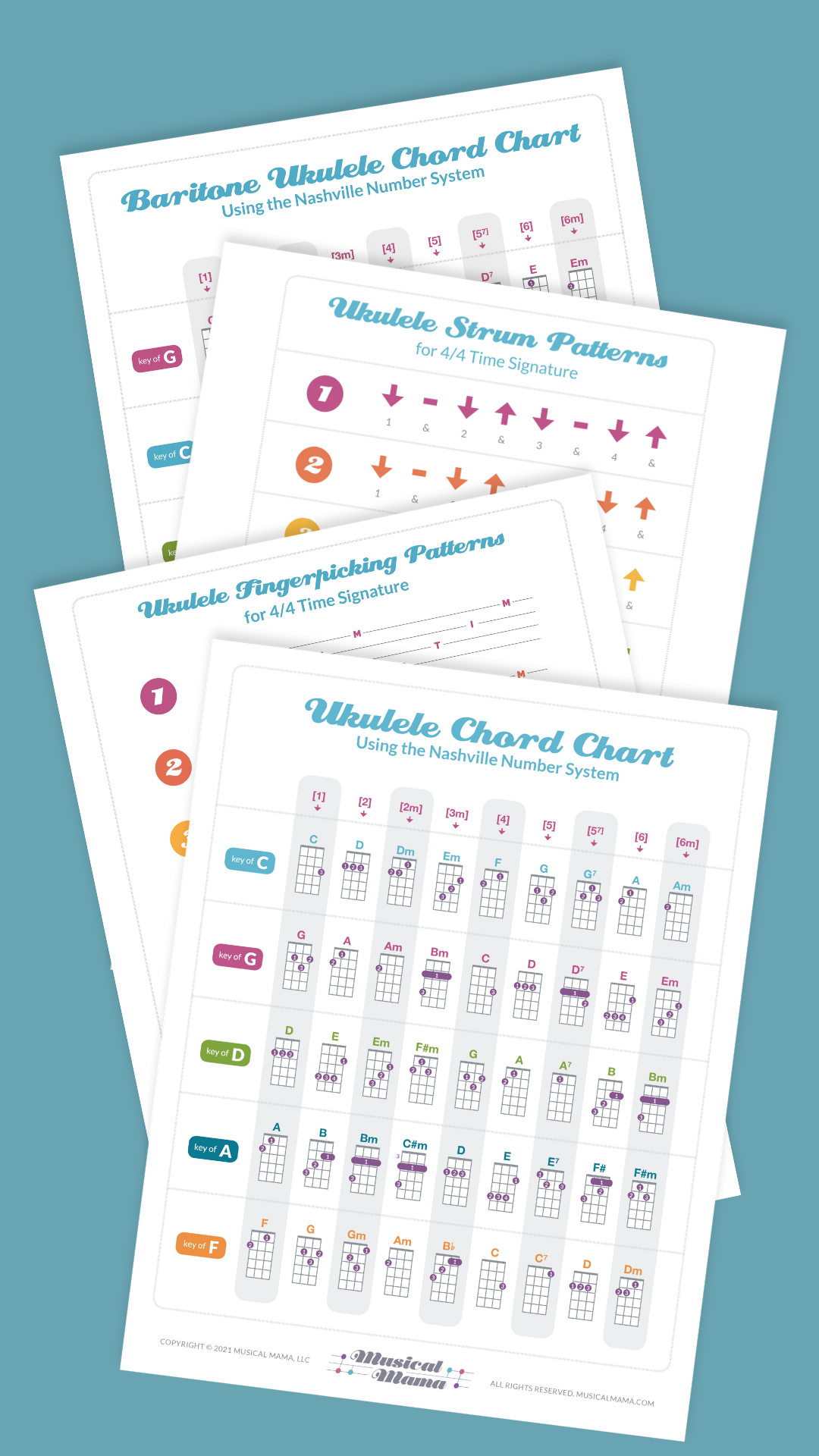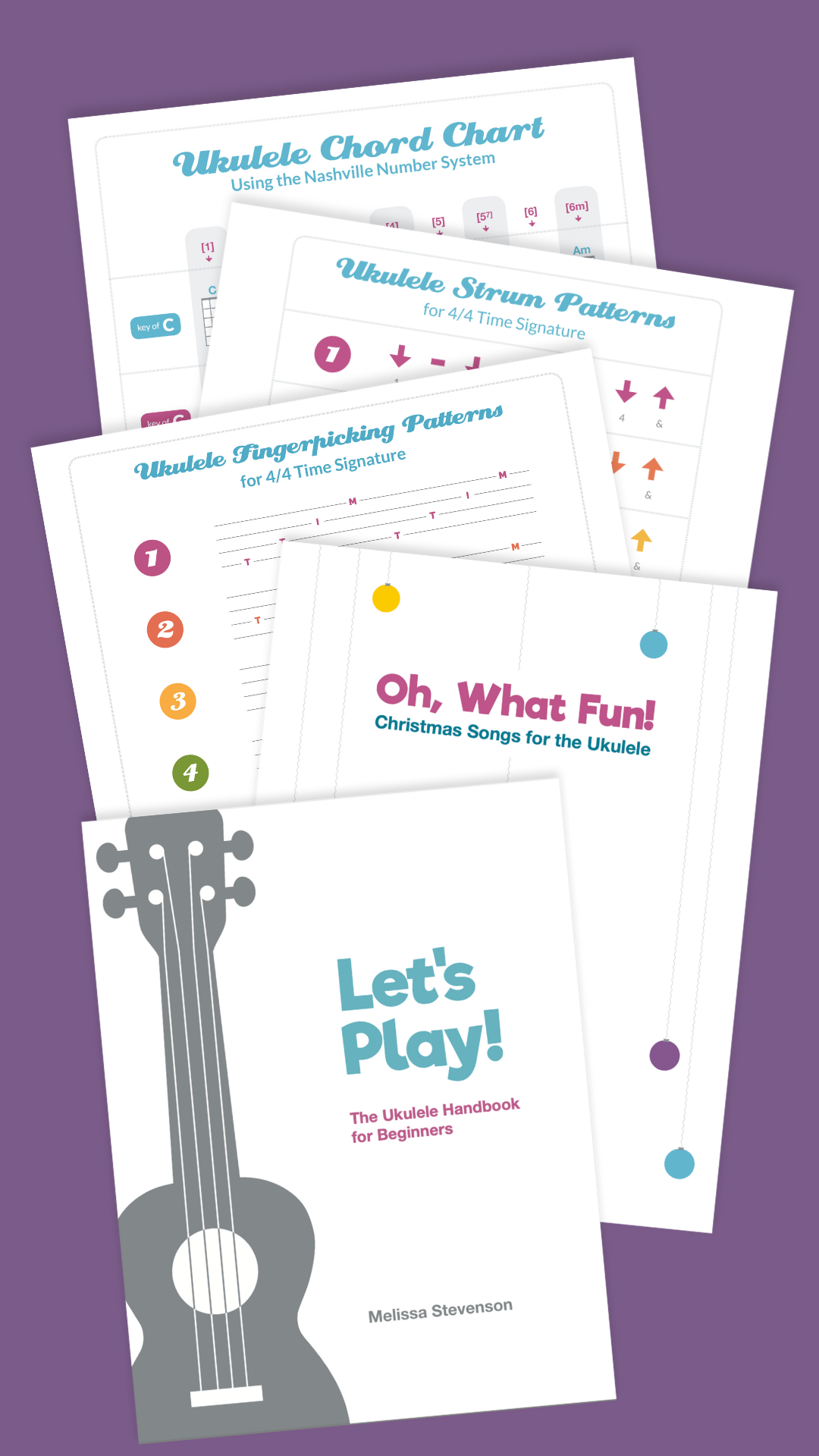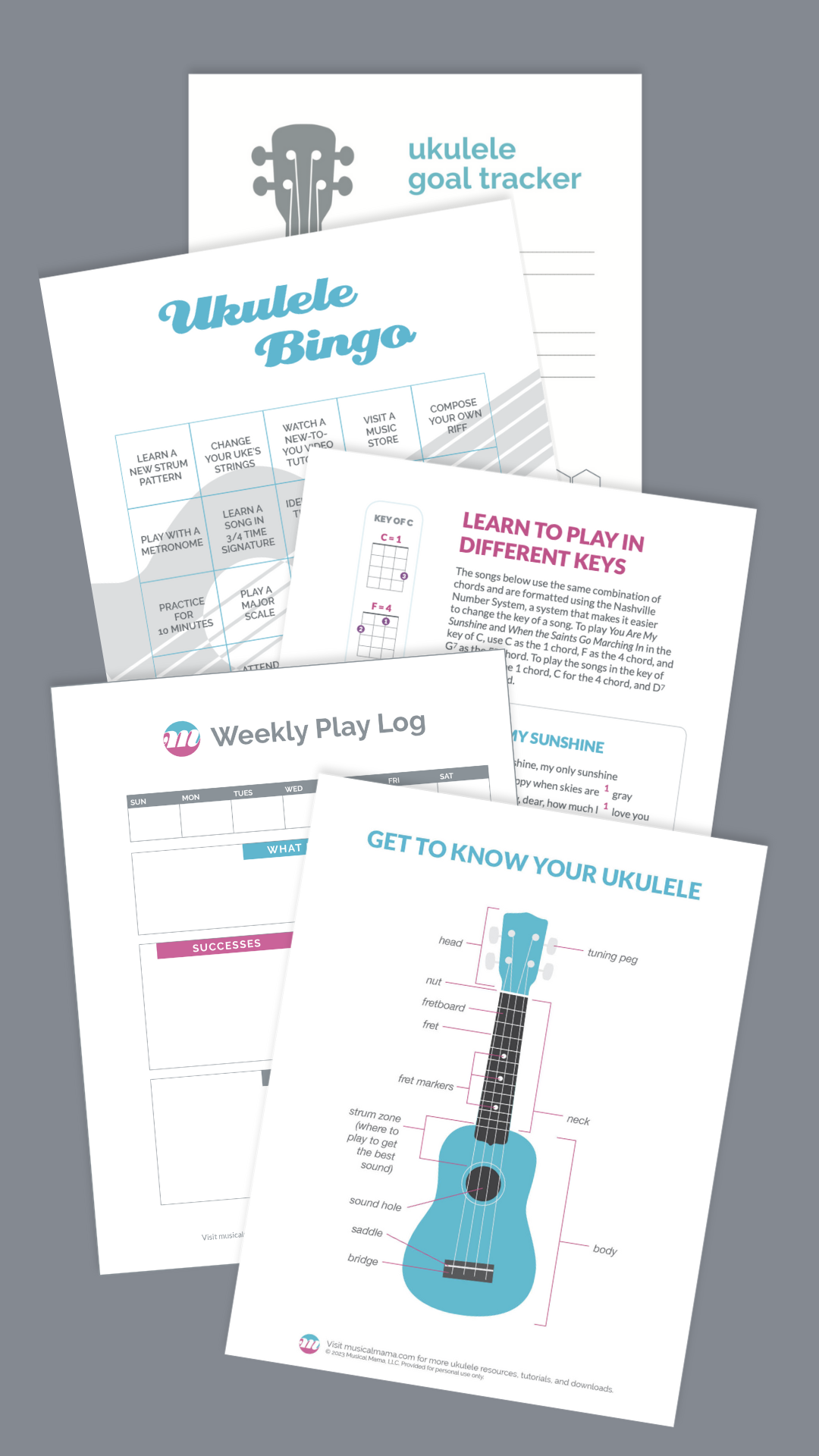I first set out to write a how-to guide for the ukulele when I learned of loved ones— a sister-in-law in Pennsylvania, my BFF in Connecticut, and many others— who were interested in learning to play. I wanted a way to share my beginner’s ukulele course with people who lived outside of Silicon Valley. After two years of writing, editing, and designing, my book is a reality and I’m so thrilled to be able to share it with you!
My goal for Let’s Play! was to create a book that would be approachable for anyone, but especially people with very little or no previous musical experience. Take a peek inside, then read on to learn what steps I took to make the book as user-friendly as possible:
Look Inside the Book:
At first glance, these pages don’t look like your typical music book, do they? That’s by design. I took great care to consider what it would feel like from the reader’s perspective. I want the book to feel less like a music book and more like a very straightforward and easy to use manual, with step-by-step instructions guiding you on every page.
Here are four of the ways I made my book approachable for brand-new players:
1 - The Font Size
When you’re reading a music instruction book, you generally have your instrument on your lap and the book set a bit farther away than if you were curled up with a novel. But many music books don’t account for this. In my opinion, if you’re squinting, you’re already working too hard, so I deliberately increased the font size to make the book easier to read from a distance. But just because I used a bigger font size doesn’t mean I skimped on content! The book is over 100 pages of easy to read instruction and songs.
2 - The Color
Most music books are in black and white, which is fine if you’re used to reading music books. But I want to make it easy for ANYONE to read, especially those who’ve never played an instrument before. I find the use of color makes it so much easier for readers to process the information in the book, and it also makes the information feel easier to understand.
3 - The Flow
On every page I’ve tried to present the material in ways that simplify the learning process as much as possible. I also took great care to ensure I was balancing the amount of content on each page. I didn’t want any page to feel too cluttered or overwhelming, and I took care to maintain a consistent look and feel throughout the book.
4 - The Videos!
On almost every page you’ll find blue play icons indicating when there is a video that corresponds to that section. Even when the concepts are clicking and you’re getting it, it can be so helpful to hear someone talk and play you through what each skill and song should sound like. I did my best to recreate the experience of my 1-on-1 lessons through the videos (I’ll write up a separate post on the videos soon).
If you have any questions about the book, please leave a comment. And if you’d like to learn to play the ukulele, please check out my book! Let’s Play! The Ukulele Handbook for Beginners is available in two formats: digital download and paperback.










